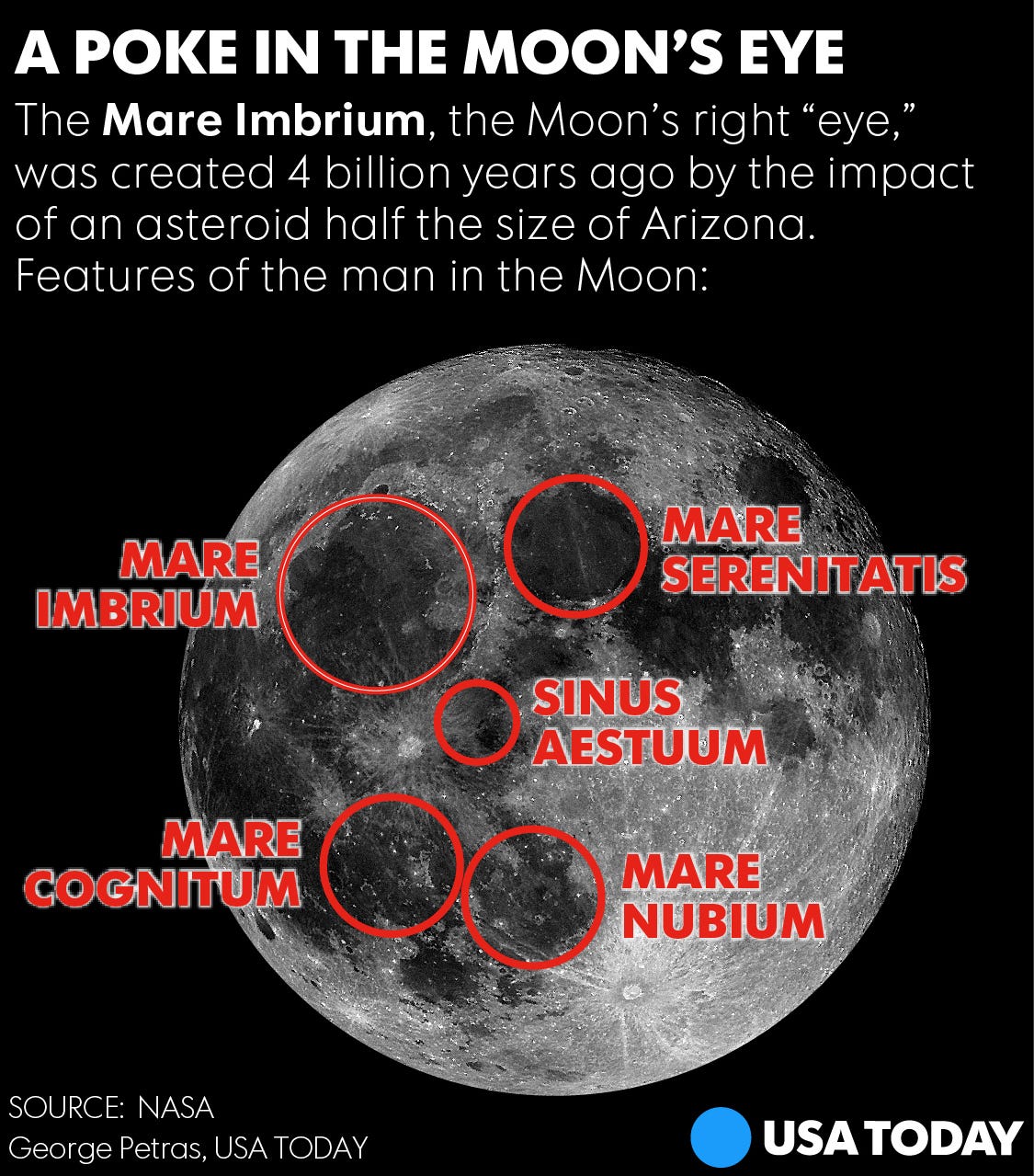How did the 'man in the moon' get there?
The 'man in the moon' who has fueled mythology and watched over sleeping children for millennia is actually the product of a gargantuan space collision billions of years ago.
For centuries, people gazing at the nighttime orb have imagined faces or rabbits or a man carrying a sack.

Those intriguing dark splotches on the moon are actually the scars made by giant space rocks that battered the lunar surface billions of years ago.
Scientists already knew a huge space rock created the right eye of the fabled "man in the moon" -- actually a crater known as the "Mare Imbrium," Latin for "sea of showers" -- but they had no idea how big.
A new scientific report published Wednesday contends that an asteroid roughly the size of New Jersey slammed into the moon some 3.8 billion years ago. The asteroid at 150 miles across is about 10 times bigger than previous estimates.
“We show that Imbrium was likely formed by an absolutely enormous object, large enough to be classified as a 'protoplanet',” said Pete Schultz, professor of Earth, environmental and planetary sciences at Brown University, and lead author of the study.
The study appeared in the British journal Nature.
To conduct his experiments, Schultz used a giant 14-foot cannon from NASA that fires small projectiles at up to 16,000 mph, in order to replicate what happened on the moon billions of years ago.

He found that grooves around the crater were likely formed by chunks of the asteroid that sheared off on first contact with the lunar surface. The grooves created by the chunks allowed Schultz to estimate the size of the asteroid.
The asteroid was so big that pieces of it escaped the moon to blast other bodies in the solar system.
"More than half of the asteroid was destroyed after hitting the moon," Schultz said. "A portion, however, would have escaped lunar gravity and sent into orbit around the sun, becoming a new group of Earth-moon-crossing objects."
Those asteroid bits "would have re-collided with both the Earth and the moon," he said.

The study results also imply that the storm of asteroids that blitzed the inner planets such as Mercury, Mars and Earth four billion years ago was even more violent than previously supposed.
Earth dwellers no longer have to worry about collisions of this magnitude anymore: All of the giant objects are gone, Schultz said, and the last big impact on the moon was about 3.78 billion years ago.
“The moon still holds clues that can affect our interpretation of the entire solar system,” he said. “Its scarred face can tell us quite a lot about what was happening in our neighborhood 3.8 billion years ago.”